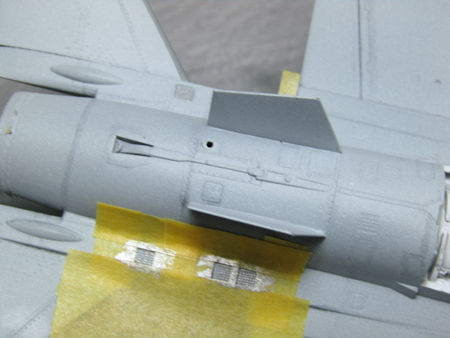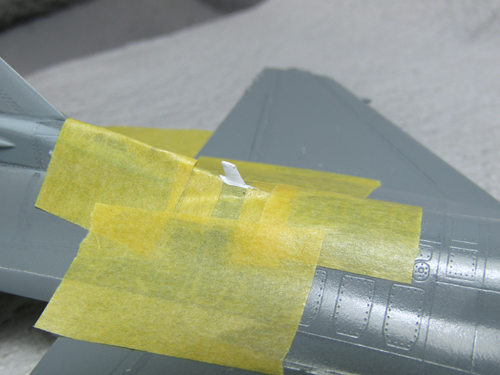Painting
First things first, a coat of primer and as that is pretty self-explanatory I won’t waste time on a picture.
The standard Hill Gray Scheme is most common around the world for F16 fleets, comprising of Light Gray undersides and Dark Gray topsides, with a lighter gray forward fuselage and vertical surfaces, lastly a medium gray nose cone.
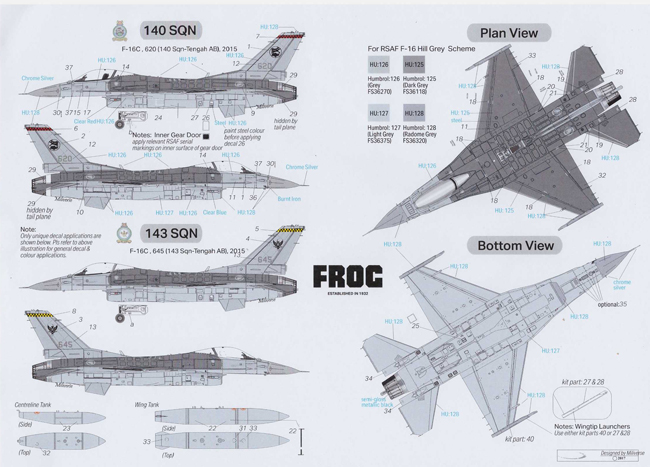
The paint guide gives the main colour callouts with Humbrol references, however I find these too dark for scale effect and used slightly lighter shades from the Gunze Mr Color range. Respectively these were H305, H306, H307 & H308 although after a first pass at the darkest shade I wasn’t happy and ended up using H337 as a shade lighter alternative.
First to get the nose cone out of the way so it can be masked off for easier handling as we proceed, the Medium Sea Grey looked to have the right scale effect.
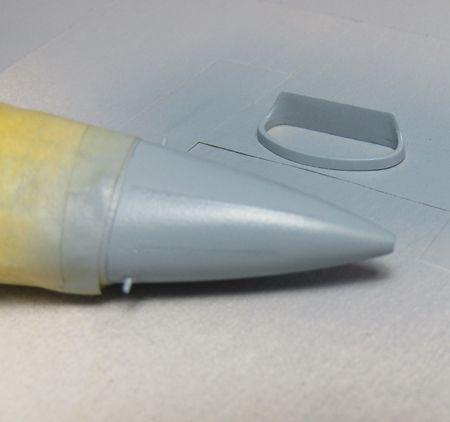
The darker radome lines were added with an ink pen and ruler prior to spraying the MSG top coat.
Any overall grey scheme benefits from pre-shading of panel lines in my opinion, this is by far my preference versus panel line wash after – those become just too “standoutish” for me, for want of a better description, so out with a thinned flat black and a furry stick.
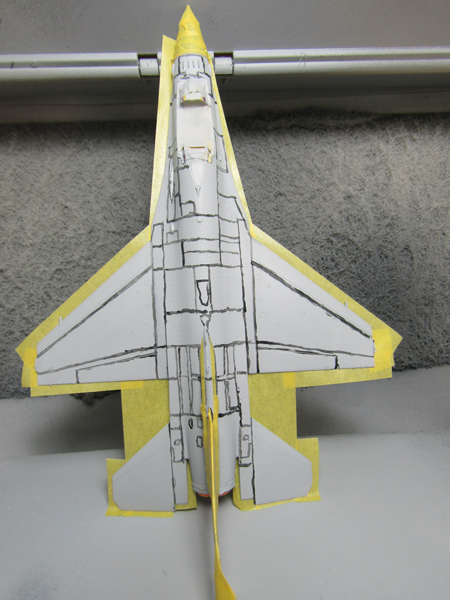
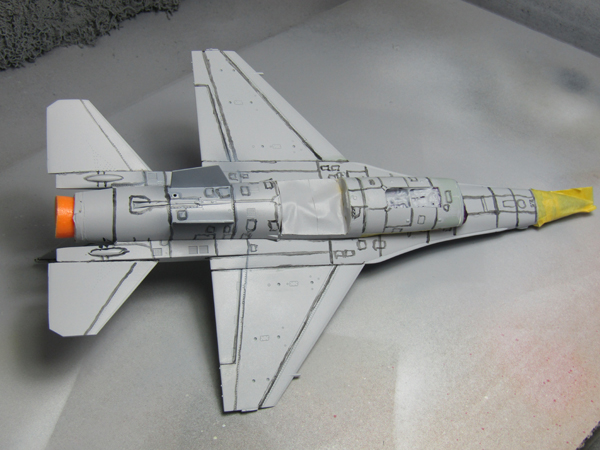
Using the lightest shade of grey, the undersides are built up in thin layers until the desired pre-shading effect is reached.
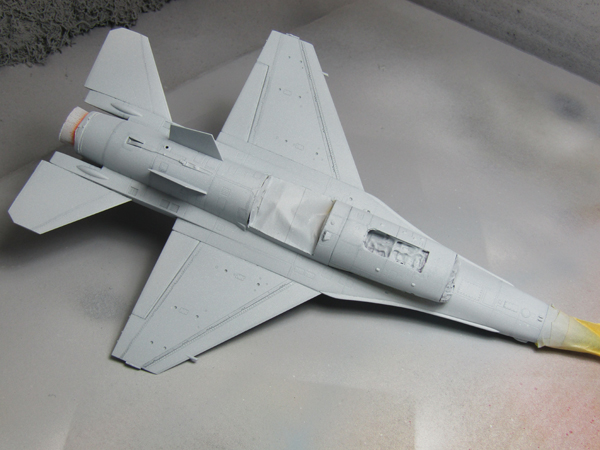
Now repeating on the topsides with the darkest shade, however as I mentioned I thought it was too dark and after just the first thin coat switched to the lighter shade H337.
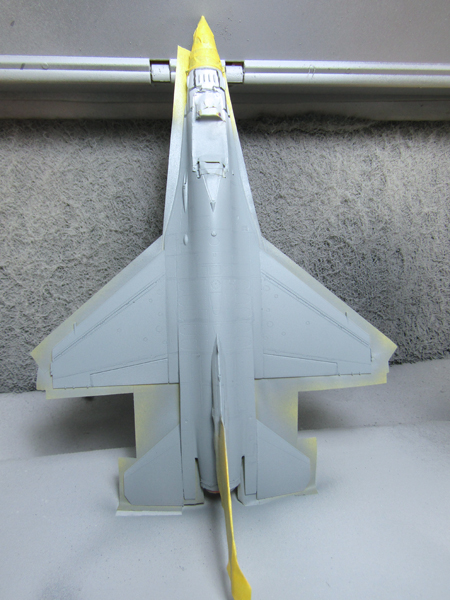
Next on the agenda was the vertical surfaces on the rear fuselage sides and the tail fin plus the forward fuselage under the canopy.
Just a little masking around the wings ensured no overspray.
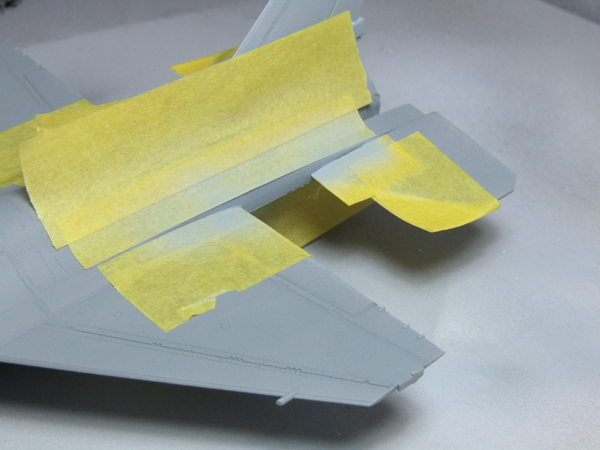
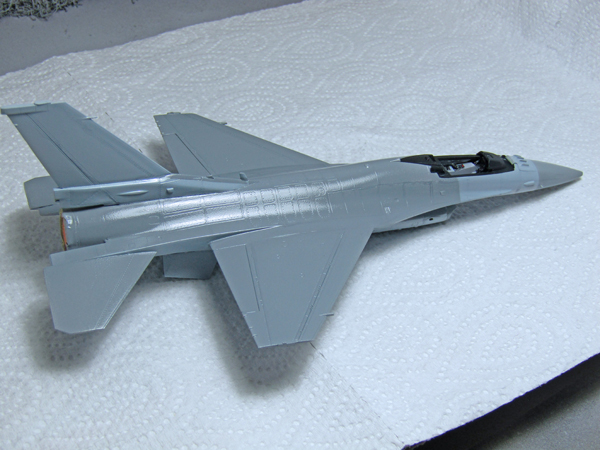
The wing and horizontal stabiliser leading edges have a protective coating which is also visible across the tailplanes, so these are masked and applied with some MSG.
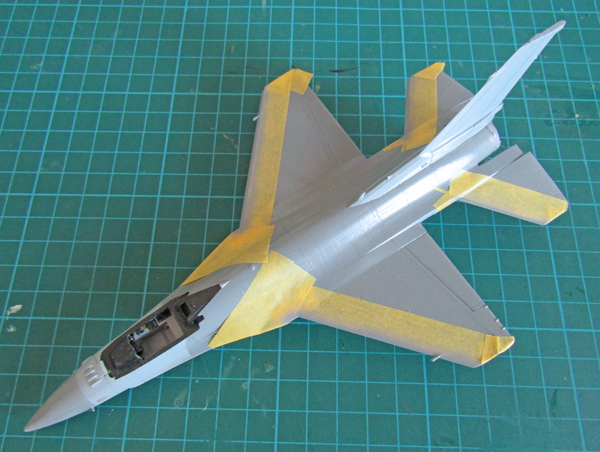
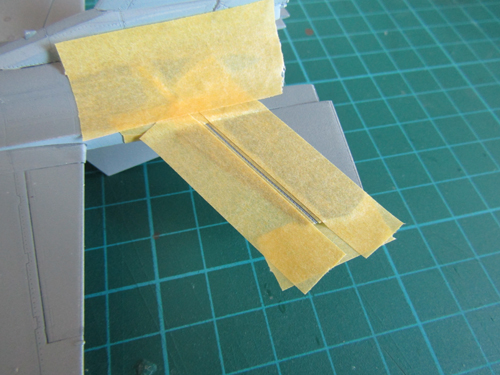
Lastly some metal vent panels on the underside and the very prominent HF ariel on the spine are masked off and sprayed respectively.
